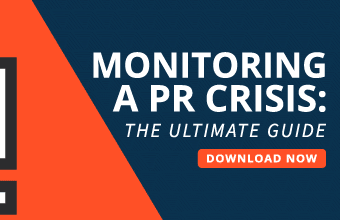Not long ago, I provided counsel to an organization subjected to what they believed was a social-media smear campaign.
In a nutshell, a former organizational member—terminated about 18 months earlier due to various professional shortcomings—began making allegations that the organization felt consisted of half-truths, distorted depictions, and outright falsehoods.
There was a distinctly racial tinge to this person’s proclamations. The critic, who is Black, had some influence in the local media as well as in the organization’s industry. The potential for this problem to fester, and even worsen, was very real.
What to do in response?
After gathering enough background to get a lay of the crisis-ridden land, I recommended my client take three crucial steps. These actions apply not only to organizations that are being wrongfully dragged through the muck, but those that have fallen short of the mark in one or more ways.
Much is at stake, particularly because the effects of prolonged crisis can be debilitating. At minimum, they result in distraction. In some extreme cases, they can set in motion a series of events that end in organizational destruction.
Note: this list is a baseline of how to respond, and is hardly exhaustive. Surely, there are other actions that this client should take—and same goes for any other organization finding themselves in the crosshairs of a public campaign to discredit them.
1. Get proactive
Develop internal and external statements, for potential use on the org’s website, to share with strategic partners and other stakeholders, to distribute internally, and to share with anyone who comes across the detractor’s claims.
Although you may need to create nuanced variations, deriving from your distinct relationship with each partner and stakeholder, these statements should be consistent and emphasize the same major points.
At least initially, these would all have “potential” for deployment—but not automatically so. This measured approach seeks to avoid fanning the flames of contention until and unless such a public outreach is deemed necessary.
In my client’s case, there was a (relatively slim) chance that the smear campaign had already reached its apex and would fade away. Thus, practicing restraint would avoid needlessly triggering the critic further.
On the other hand, the moment it became clear that the organization would need to issue the statement(s), then it should be prepared to do so.
Regardless of whether further criticisms would ensue, the criticism already leveled would live on indefinitely on social media platforms and wherever the critic had left a trail.
That represents a longer-term issue to address—hence, the creation of a responsive statement (or statements) available to individual inquiries, and, potentially, to broader audiences in different contexts.
2. Make a statement
With any statement that comes under some shadow of controversy, there is great temptation to lash out. This is particularly the case when an organization and some of its individuals feel they have been unfairly maligned.
It is essential to know where to “pick your battles.” For example, my client had ample evidence—and was tempted to go public with it—that their detractor was spreading falsehoods. However, publicly calling out the detractor would have escalated the conflict and prolonged the crisis. So long as those distortions were not extremely damaging, I advised restraint. My client highly valued moving forward, which would have been hindered by back-and-forth engagement.
Words ought to be chosen skillfully and brim with compassion, conviction, and restraint. Stick to facts that dispel falsehoods. Be brief, resisting the tug of a point-by-point refutation. Shift the focus toward the future, rather than getting drawn into a re-hash of the past.
This is not merely the “high road”—it’s the smart road. It becomes a highly visible opportunity for the organization to “walk the walk” of its mission, vision and character—while also demonstrating that it is moving onward and in a better direction.
3. Emphasize discipline within the organization
The ability to weather these PR / reputational storms hinges in large part on across-the-board discipline. Anyone who chooses their words unwisely, in any context, could undermine the entire organizational effort.
A flippant text, an off-the-cuff unkind remark, a foolish social media post…these are only a few of the many avenues of communication (and potential missteps). Couple those platforms with an undisciplined, or non-existent, filter and you have the makings of a protracted PR nightmare.
Even a minor moment of poor judgment may represent the “weak link” in an otherwise solid chain, with the critic seizing on that one shred of “evidence” as proof of the entire organization’s “guilt” in some regard.
To avoid this scenario, it is imperative to tell all within the organization that there is no room for slip-ups. For example, if someone in your org is asked about the situation, they should know to direct inquiries to the organizational statement(s) that have already been carefully and thoughtfully crafted. Along those lines, all media inquiries should be directed to the marketing and public relations team.
In conclusion, for any organization facing crises from A to Z, the key is to keep your eye on the prize: an end to the saga, with renewed focus on a stronger future that revolves around your core mission.








